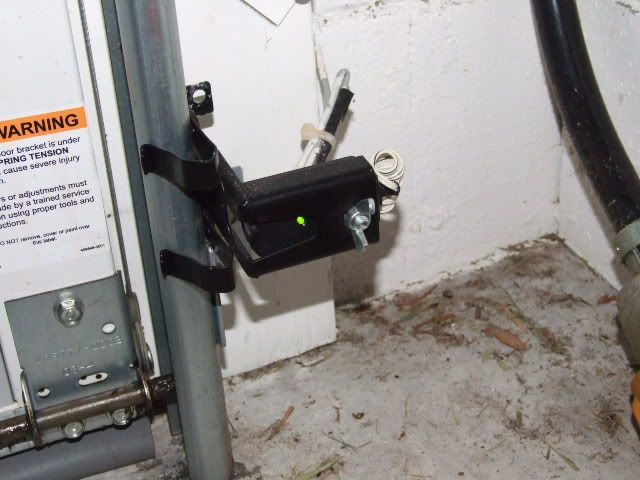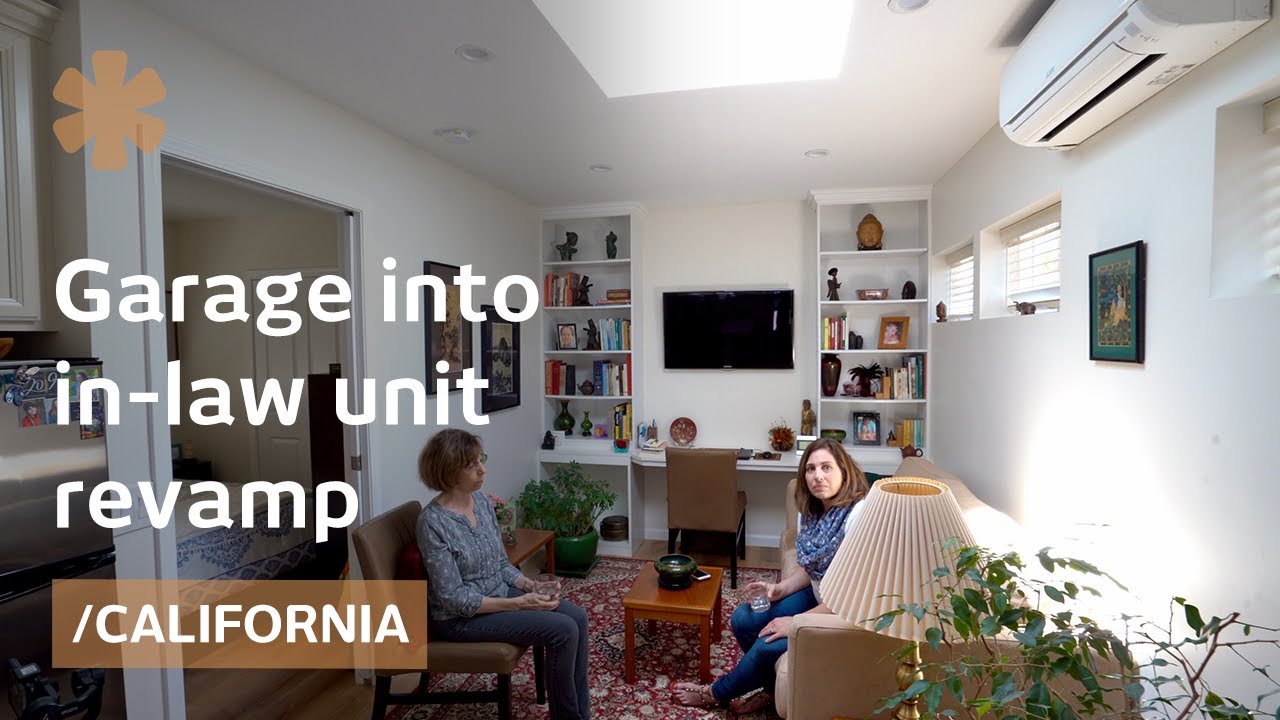
Garage conversions are a great way for property owners to increase their value while adding additional living space. The process is relatively simple and often requires little or no planning permission, as long as it's compatible with the existing home.
Garage conversions can be a cost-effective, flexible way to create an extension, new bathroom, or a home office. Because so many older garages in Britain were built on strong foundations, you do not have to dismantle your existing structure.
It is important to use a mixture of materials when converting garages into garden rooms. This makes them both stylish and practical. This garage to backyard room is finished off with a modern wood effect wall. A patterned floor tile gives it a more inviting feel than a regular concrete surface.

Another garage to garden conversion involves a more traditional approach that focuses on brickwork. The architects repaired the roof and repointed brickwork. They also added insulation, lighting, and electrics. They also installed doors that open onto the garden.
If the garage has a pitched roof, good headroom and adequate space, it can be converted into a garden area. This will give you more space to create a kitchen or dining area, and also allow you to make the most of your garden.
Converting your garage into a garden room is one of the most cost-effective ways to add living space to your home. The cost of a good conversion will vary from PS500 to PS1500 for a square metre. This is taking into consideration structural changes, electrical and ventilation work.
For a customized quote, it is worth talking to a Resi consultant if you are interested in converting your garage into a garden room. To get a precise quote, you need to consider the extent of structural changes needed, the number and type of electrical and plumbing fixtures required, and the level and integration of the space with your home.

For homeowners who lack space or want extra space to accommodate guests, visitors, or their growing family, a garden garage conversion is a good option. If you are planning to rent your home in future, you might be able convert the garage into a living space.
The cost of a garage to garden room conversion can vary depending on how much work is involved and the type of furnishings that are used. A professional builder will help you determine if your garage is suitable for a garage-to-garden room conversion. He will also provide a customized quote for the conversion that includes costs for a new roof, flooring, and walls.
Always check with your local council to determine if you will need planning permission. Garages are typically considered 'permitted development' so don't need any planning permission. But, this could change and it's always a smart idea to check with your local authorities first.
FAQ
What is the average time it takes to remodel a bathroom.
Two weeks typically is required to remodel a bathroom. However, this varies greatly depending on the size of the project. You can complete smaller jobs like adding a sink or vanity in a few days. Larger jobs like removing walls or installing tile floors and plumbing fixtures can take several hours.
The rule of thumb is that you should allow three days for each room. This means that if there are four bathrooms, you will need 12 days.
How should you renovate a home?
The roof. The second is the plumbing. The electrical wiring is third. Fourth, walls. Fifth, floors. Sixth, the Windows. Seventh, the doors. Eighth, it's the kitchen. Ninth are the bathrooms. Tenth, the garage.
Finally, after all this work is done, you'll have everything you need to get into the attic.
You can hire someone who will help you renovate your house if you are not sure how. It takes patience, time, and effort to renovate your own home. It can also be expensive. Don't be discouraged if you don’t feel up to the task.
Renovations aren’t always inexpensive, but they can make your life easier and save you money in the long term. A beautiful home can make your life easier.
Is $30000 enough for a kitchen remodel?
The cost of a kitchen remodel can vary from $15000 to $35000, depending on the amount you spend. Expect to spend over $20,000. For a complete kitchen renovation. For less than $3000, you can update appliances, add lighting, and replace countertops.
An average full-scale remodel costs $12,000 to $25,000 There are ways you can save money without sacrificing on quality. A new sink can be installed instead of replacing an older one. This will cost you approximately $1000. You can also purchase used appliances at half of the cost of new.
Kitchen renovations take longer than other types of projects, so plan accordingly. You don't want your kitchen to be finished halfway through.
The best thing is to get going early. Start looking at options and collecting quotes from various contractors. Then, narrow down your options based upon price, quality, availability.
Once you have identified potential contractors, request estimates and compare their prices. The best bid may not be the most affordable. It's important that you find someone with similar work experiences who can provide a detailed estimate.
Add all costs to the final cost. These might include extra labor costs, permit fees, etc. Be realistic about how much you can afford and stick with your budget.
Tell the contractor if you don't like any of the bids. If you don't like the first quote, tell the contractor why and give him or her another chance. Saving money is not a matter of pride.
What is included in a full kitchen remodel?
A complete kitchen renovation involves more than simply replacing the sink and faucet. There are cabinets, countertops as well, lighting fixtures and flooring.
A full kitchen remodel allows homeowners to update their kitchens without having to do any major construction. This allows the homeowner to update their kitchens without having to demolish any existing structures, making it easier for the contractor as well.
There are many services that can be done to your kitchen, including plumbing, electrical, HVAC, painting, and carpentry. Depending on the extent of the kitchen remodel, multiple contractors may be required.
A team of professionals is the best way to ensure that a kitchen remodel runs smoothly. There are often many moving parts in a kitchen remodel, so small problems can cause delays. If you choose a DIY approach, make sure you plan and have a backup plan in place in case things go wrong.
What are the biggest expenses in remodeling a kitchen?
There are several major costs involved in a kitchen remodel. These include demolition, design fees, permits, materials, contractors, etc. They seem quite small when we consider each of these costs separately. But when you combine them, they quickly add up to be quite significant.
Demolition is usually the most expensive. This includes removing cabinets, countertops and flooring. The insulation and drywall must be removed. You must then replace these items with new ones.
Next, an architect must be hired to create plans for the space. To ensure your project is compliant with building codes, you will need to pay permits. You will then need to find someone to perform the actual construction.
Once the job has been finished, you need to pay the contractor. Depending on the size of the job, you could spend between $20,000 to $50,000. You should get estimates from multiple contractors before you hire one.
If you plan, you can often avoid some of these costs. You might be able negotiate better materials prices or skip some work. It is possible to save money and time by knowing what to do.
Many people attempt to install cabinets themselves. People believe that this will save them money since they won't have to hire professionals for installation. It is often more expensive to have professional installation services. A professional will usually finish a job in half as much time as you would.
You can save money by buying unfinished materials. Before purchasing pre-finished materials like cabinets, you must wait until all the pieces are assembled. Unfinished materials can be used immediately by you if purchased. And if something doesn't turn out exactly as planned, you can always change your mind later.
But sometimes, it isn't worth going through all this hassle. It is important to plan your home improvement projects in order to save money.
What would it cost for a home to be gutted versus what it would cost to build one?
A home's contents are removed, such as walls, floors, ceilings and plumbing. Gutting is done when you want to make some modifications before moving in. The cost of gutting a home can be quite expensive due to the complexity involved. Depending on your job, the average cost to gut a home can run from $10,000 to $20,000.
Building a home is where a builder builds a house frame by frame, then adds walls, flooring, roofing, windows, doors, cabinets, countertops, bathrooms, etc. This usually happens after you have purchased lots of lands. Building a home is typically cheaper than renovating, and usually costs between $15,000-30,000.
It all comes down to what you want to do in the space. You'll likely need to spend more money if you want to gut a property. But if your goal is to build a house, you won't need to disassemble everything and redo everything. You can design it yourself, rather than waiting for someone else.
Statistics
- 55%Universal average cost: $38,813Additional home value: $22,475Return on investment: 58%Mid-range average cost: $24,424Additional home value: $14,671Return on investment: (rocketmortgage.com)
- 5%Roof2 – 4%Standard Bedroom1 – 3% (rocketmortgage.com)
- Windows 3 – 4% Patio or backyard 2 – 5% (rocketmortgage.com)
- bathroom5%Siding3 – 5%Windows3 – 4%Patio or backyard2 – (rocketmortgage.com)
- About 33 percent of people report renovating their primary bedroom to increase livability and overall function. (rocketmortgage.com)
External Links
How To
How to Remove Tile Grout from Floor Tiles
Most people don't know that tile grouting exists. It is used to seal joints between tiles. There are many types available today. Each is used for a specific purpose. We'll show you how we can remove grout from floor tiles.
-
Before you begin, make sure you have everything you need. It would be best if you had a grout cutter, a grout scraper, and some rags.
-
Now it is time to clean the grout and remove any debris or dirt that has gotten under the tiles. Use the grout cutter to cut away at the grout and gently scrape away any loose pieces. You should not damage any tiles.
-
Once you have cleaned everything up, take the grout scraper and use it to clean off any remaining grout. If you don't have any grout, you can continue to step 4.
-
After you have done all the cleaning, you can move on to the next step. Soak one of your rags in water. Make sure the rag is fully wet. To ensure that the rag does not absorb water, dry it.
-
The wet rag should be placed on the joint between the tile and the wall. Press firmly on the rag until the grout begins to break apart. Slowly pull down on the rag until it is pulled towards you. Continue pulling it backwards and forwards until all the grout has been removed.
-
Continue to repeat steps 4 and 5, until all grout has been removed. Rinse and repeat the procedure if necessary.
-
After you have removed grout, dry the tiles by wiping them with a damp cloth. Allow to dry completely.